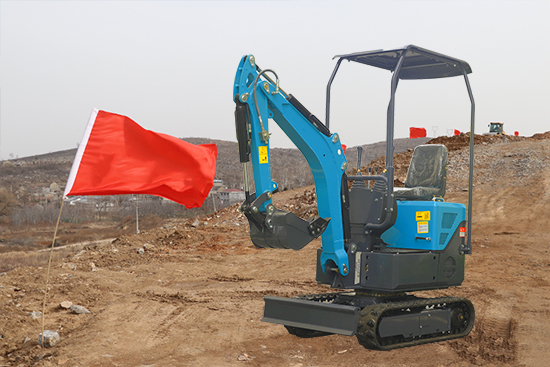Welcome to Jining Yizhan International Trade Co., Ltd
The Exceptional Performance of Mini Excavators in Indoor Demolition Projects
The Exceptional Performance of Mini Excavators in Indoor Demolition Projects
In the context of accelerating urbanization and growing demand for building renovation, indoor demolition projects face challenges such as narrow spaces, high precision requirements, and strict environmental restrictions. Traditional manual demolition is inefficient and poses significant safety risks, while large machinery struggles to adapt to complex indoor environments. Mini excavators, with their unique performance advantages, have become core equipment in indoor demolition, demonstrating outstanding performance in improving efficiency, ensuring safety, and optimizing operational quality.
I. Strong Adaptability to Tight Spaces
Indoor demolition scenarios often involve buildings such as office towers, shopping malls, and old residential buildings, characterized by confined spaces (e.g., low ceilings, narrow corridors, stairwells, or elevator shafts), where large machinery cannot access. Mini excavators (typically with a width ≤1.5 meters and height ≤2.5 meters) can pass through standard door frames (approximately 1.2 meters wide), maneuvering flexibly through corridors, rooms, and mezzanine areas, and can even be transported via elevators to high-rise construction sites. Their compact design, combined with a 360° full rotation mechanism, allows a minimum turning radius of just 1-1.5 meters, enabling precise operations in spaces as small as 10 square meters while avoiding accidental damage to non-demolition structures (such as load-bearing columns and pipelines).
Application Example: In a shopping mall renovation project, a mini excavator was transported via elevator to the 5th-floor construction area. It completed the wall demolition task in 3 days, which would have taken 20 days with traditional manual labor, without damaging the surrounding glass curtain walls or fire protection facilities.
II. Precise Operations with Multifunctional Attachments
Mini excavators are equipped with detachable hydraulically driven attachments that allow quick mode switching to meet diverse demolition needs:
Hydraulic Breakers: High-frequency vibration crushes concrete walls and floors with controllable impact force, preventing excessive fragmentation and structural damage. Ideal for delicate tasks such as separating beams/columns and凿除地面 (ground chiseling).
Hydraulic Shears/Eagle Shears: Efficiently cut reinforced concrete, precisely separating steel bars from concrete blocks to reduce waste disposal. Particularly suitable for demolishing load-bearing structures with steel reinforcement.
Grabs/Clamps: Grab and transport demolition waste (e.g., bricks, gypsum boards), replacing manual handling and reducing labor intensity.
Milling Heads: Level the base surface after demolition, providing pre-treatment for subsequent decoration and enabling one-stop operations of "demolition-cleaning-levelling."
These attachments use hydraulic systems to precisely control force and angle. Combined with operators' visual monitoring (some models feature camera systems), they can work safely within 10 cm of pipelines and doors/windows, achieving precision far exceeding manual labor or traditional machinery.
III. Efficient Operations and Cost Optimization
The power systems of mini excavators (diesel/electric) offer both strong torque and energy efficiency, with a demolition efficiency 10-20 times that of manual labor. For example, demolishing 100 cubic meters of concrete walls requires 10 workers 5 days manually, while a mini excavator needs only 2 operators and 1 day, with the ability to work continuously (8-10 hours daily), significantly shortening project timelines. Additionally, mechanical operations reduce labor input and safety risks (e.g., falls from heights, object strikes), lowering comprehensive costs by 30%-50% in the long run.
Environmental Advantages:
Electric mini excavators are zero-emission. Paired with on-board dust collection devices and noise reduction equipment, they limit operational noise to below 85 decibels (better than national standards) and reduce dust emissions by 60%, meeting indoor construction environmental requirements (e.g., GB 50325 indoor air quality standard).
IV. Typical Application Scenarios
Building Renovation Projects: Demolition of office partitions, hotel room remodeling, and interior space restructuring in old residential areas;
Industrial Plant Demolition: Removal of workshop equipment foundations and concrete platforms;
Emergency Rescue: Clearing internal obstacles in buildings after earthquakes and rapid demolition/rescue in confined spaces;
Cultural Relic Restoration: Protective demolition of ancient buildings in conjunction with manual labor, precisely剥离 (stripping) damaged components without harming original structures.






